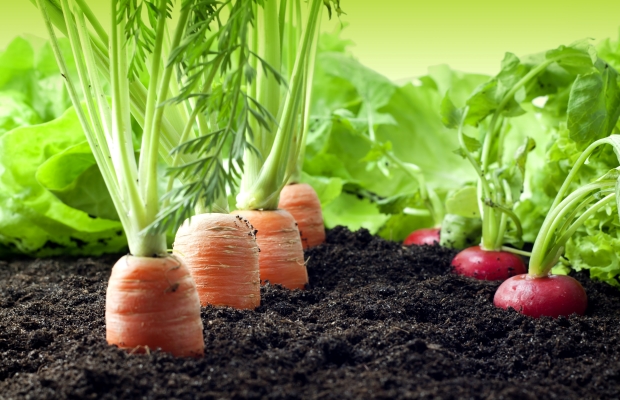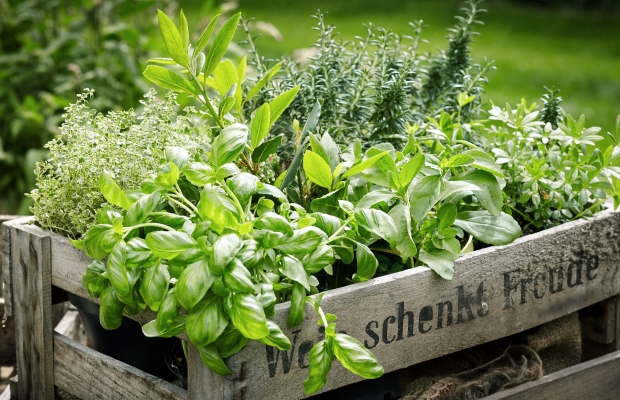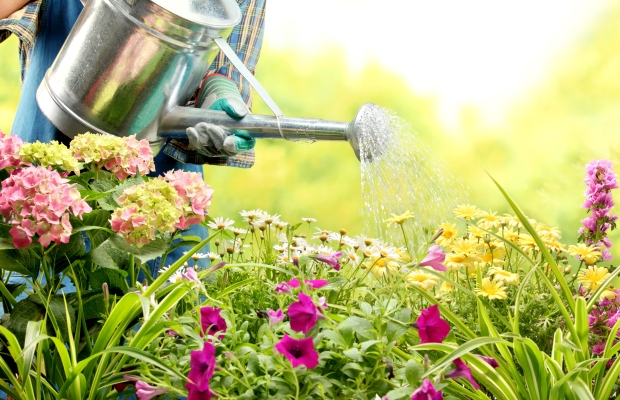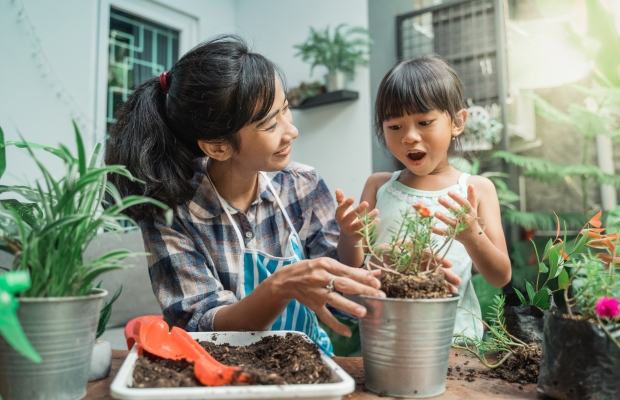
How a little gardening can help you feel better and eat better
If you’ve got more time on your hands this summer, or are looking for things to do with the kids, or just in need of a new hobby, why not try gardening?
Gardening has been shown to have a whole host of health benefits. Research shows it can help you feel better, help you lose weight, and increase your quality of life.
It could also help with your cooking. Most of us eat too much salt, which over time can raise blood pressure and raise your risk of stroke, so adding herbs that you’ve grown could be a great way to add flavour without salt.
You don’t need to have a large amount of space, or any outdoor space at all. If you have a windowsill or space near the window that’s big enough for a plant pot, then that’s enough to get started.
Getting started

The first thing you’ll need to do is find a space.
- If you have a garden, look for a level, sunny spot that’s sheltered from the wind. Prepare the soil by digging out weeds and working in some compost or manure if you can. This will add nutrients to the soil, giving your plants the best chance of success. No compost or manure? Don’t worry – just give them a little plant food every week or two once your plants start to grow.
- If you’re planting indoors or on a balcony, look for a spot that gets lots of sunlight. Don’t worry if you don’t have a particularly sunny spot – you can find a plant that is happy in shade, such as heucheras, foxgloves, or primroses (primulas) for shady outdoor spots, or for shaded indoor areas try a peace lily or snake plant. Many herbs, such as mint, parsley, chives and dill, also like shady areas.
Grow your own heart-healthy vegetables

If you’re planting a garden outdoors, why not grow some vegetables to help you towards your 5-a-day? Lettuce, spinach, rocket, fennel, carrots, radishes, and turnips will all thrive if you plant them in the summer months. When it gets to autumn, you can plant onions, spring onions, peas or broad beans to harvest next year. Most of these vegetable crops are easy to grow and suffer few pests and diseases, so they’re great for the beginner gardener.
You can even grow vegetables indoors. You’ll need to pick the right varieties and make sure each plant has space to grow. Lettuce is one of the easiest vegetables to grow indoors, as are chilli peppers, radishes, spring onions, and carrots (as long as you have a deep enough container). Leafy greens can also be grown inside, including watercress, sorrel, spinach, and kale, which all grow in moderate light levels.
Create a herb garden for delicious meals

If you’re planting indoors or on a balcony, you’ll probably have limited space but there’s still plenty of options. Herbs are a great choice for an indoor garden because they grow well in pots. Why not grow your own herb garden by planting chives, mint, parsley, and thyme, all of which are easy to care for? You can even keep things simple by buying your favourite herbs from the supermarket and re-planting them into larger pots for your window box or windowsill.
Grow some flowers

Wouldn’t it be great to look around your home and see beautiful flowers that you’ve grown? If you have outdoor space, add some colour to your garden by planting flowers. Summer is the perfect time to start off biennials (which live for two years) like foxglove, forget-me-nots, and hollyhocks, and perennials (which will come back year after year) like lily-of-the-valley and Goldsturm daisies (rudbeckia). You can also sow speedy annuals (that grow for one season), like cornflowers, which will flower in less than two months.
If you’d rather have a more natural-looking garden, scatter some wildflower seeds and let nature take it from there. In a few weeks you’ll have your own wildflower garden, which is a perfect habitat for insects and bees.
You can even grow flowers indoors. Easy options are a peace lily, geraniums (pelargoniums), or African violets.
We’re here for you with information and support around coronavirus
Our fortnightly Heart Matters newsletter includes the latest updates about coronavirus when you have a heart condition, as well as support for healthy eating, staying active and your emotional wellbeing.
How do I care for my garden?

The summer months can be dry, so it’s important to remember to water your plants well during dry spells, without overwatering them. If the top of the soil is dry, that doesn’t necessarily mean that your plant needs water. Water is needed at the root tips, so surface moisture isn’t always the best guide. Push your finger down into the soil to at least knuckle depth to check – if it’s dry, your plant likely needs to be watered.
Removing weeds regularly from your garden will also help give your plants the best chance to thrive.
During the summer months, keep an eye out for animals that can damage your plants. Some to look out for include aphids (greenfly and blackfly), lily beetle, vine weevils, slugs and snails. There are lots of resources online to help you identify and tackle pests, including this guide to common garden pests from the RHS.
If you have foxes, cats, squirrels or rabbits in your area, you can buy mesh or netting covers for your garden to keep them off your plants.
Making gardening fun for children

For children, getting involved by planting their own herbs, vegetables, or flowers and watching them grow over the coming weeks will give them a sense of achievement. Encourage their curiosity by asking them to spot the different insects and bees that can be found among the garden plants. Get creative and help them decorate planting labels, or ask them to draw all the things they spot in the garden. Growing their own veg or salads can often encourage children to try new things, too.
Get gardening help and information
There are many helpful resources that can help you get the most out of your new garden:



